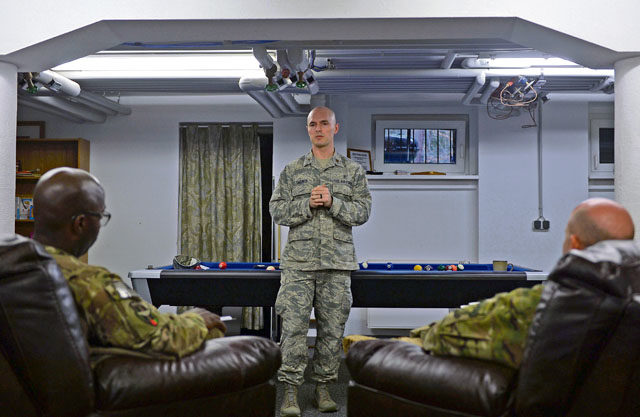
The Air Force Deployment Transition Center is continuing to push forth its mission to support the Air Force’s most valuable assets: Airmen.
The deployment decompression facility, which recently marked the arrival of its 10,000th redeployer on Ramstein, aims to help Airmen coming home from deployment transition back into a nondeployed environment.
Gen. Tod Wolters, U.S. Air Forces in Europe and Air Forces Africa commander, praised the personnel at the DTC for taking care of Airmen and working to enable the Joint warfighter.
“The DTC helps Airmen transition from deployment to back home. … The center has been in place for nearly seven years,” Wolters said. “This vital program ensures our deployers get the time and the assistance they need to adjust from deployment life back to at-home life. Our Airmen are committed to supporting the joint fight, and the DTC is a critical part of our commitment.”
The DTC offers its services to Airmen of every career field and combatant command.
“We have to take care of people; they are the human capital that the Air Force banks on,” said Maj. Corey Carnes, program director. “Why do we think the DTC is important? Because we need our Airmen.”
Airmen pass through the DTC at the discretion of their deployed commander. A deployment commander wishing to send people through the DTC only have to fill out a form called the DTC Nomination Assessment Tool. Commanders also have the option to call the program director to discuss sending their Airmen.
Another way for Airmen to pass through the facility on the way back is if their career field functional manager defines it as a requirement before they deploy.
Carnes explained that although the criteria for sending Airmen through the DTC was once much more selective, it has since broadened in order to take in more redeployers, including those deployed to locations in Europe and Africa. Airmen used to go through the facility based on actual or potential exposure to hazards down range, he said. The benefits have since been shown to be applicable to a wide range of redeploying Airmen.
The DTC’s four-day reintegration course includes a welcome dinner upon arrival, sessions about post-deployment life, and experiential outings in the local area. The program aims to give Airmen tools to immerse back into normal society.
“We’re not teaching them rocket science or anything new,” Carnes said. “We are reminding them of the positive skill sets they probably already possess, things you learn in basic training or on wingman days. We need reminders, and the DTC kind of serves as that reminder. You don’t just have your job to do; you’ve got a life to live.”
Throughout the program, the Airmen and staff dress in civilian attire. They would only be in uniform upon arrival to Ramstein.
The course is meant to be as laid back as possible while still maintaining professionalism, Carnes said.
Carnes remained adamant about giving redeployers plenty of time to decompress, saying the objective of the DTC is to help them reconnect with the sights and sounds of a nondeployed environment, not fill up their schedule.
“The redeployers are here for approximately 72 hours, but we only control a small portion of their time,” he said.


